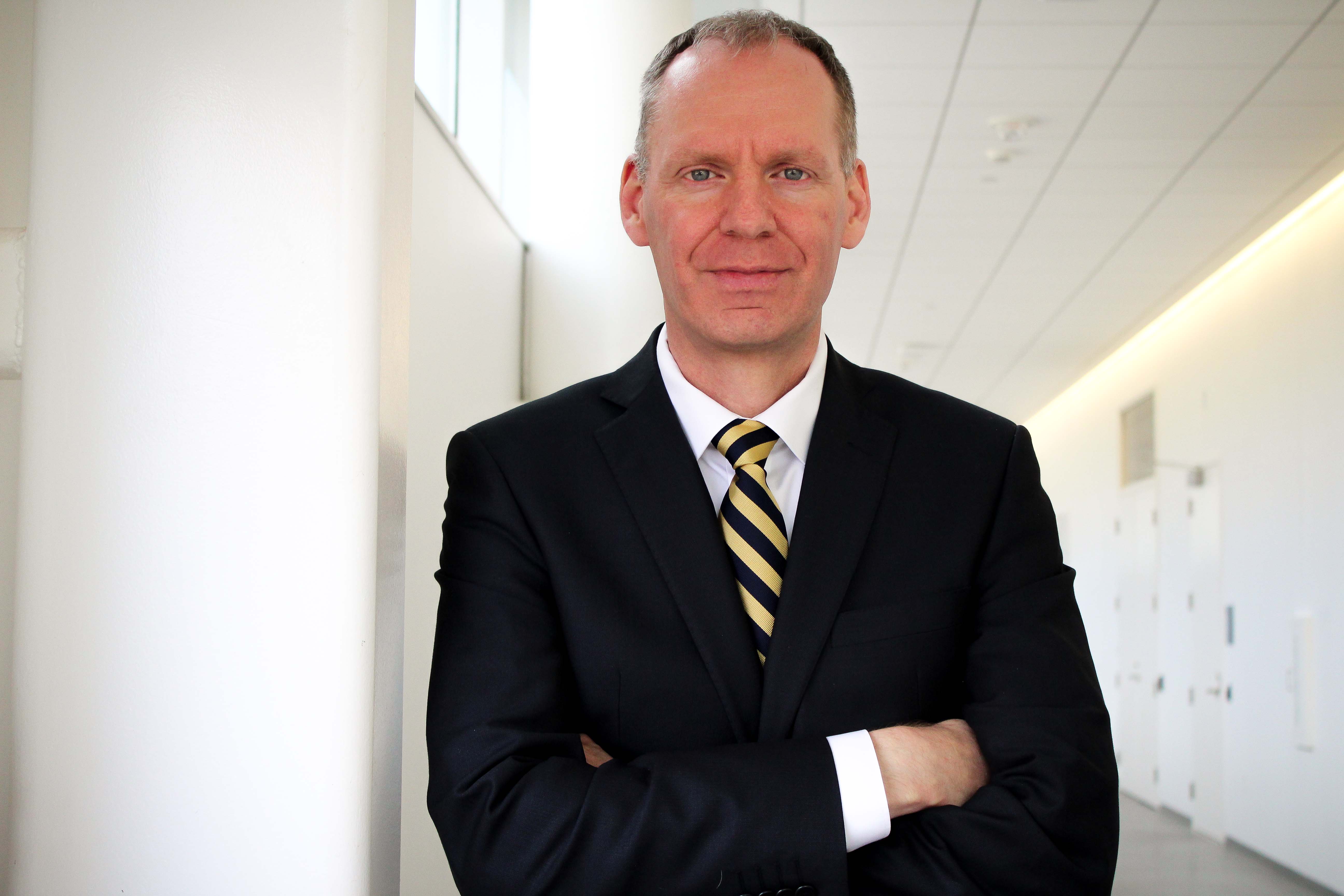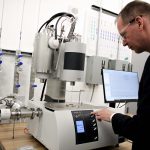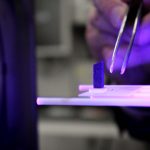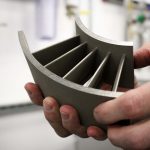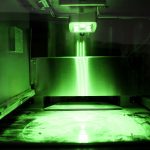We’ve all watched videos, mesmerized, while a machine adds layer upon layer to 3D print anything from a model of the Eiffel Tower to a rubber duck. Aside from being really cool, this technology has tremendous implications for revolutionizing companies’ manufacturing processes.
Under the leadership of Castleman Term Associate Professor in Engineering Innovation Rainer Hebert, the Pratt & Whitney Additive Manufacturing Center (PW AMC) at the UConn Tech Park is addressing the biggest problems currently faced by the aerospace industry in additive manufacturing.
Hebert has been a member of the UConn faculty since 2006. In 2012, when the University launched the first stage of its partnership with Pratt & Whitney to develop an additive manufacturing center, Hebert was at the helm. The center began with three machines in the Longley Building.
We focus on the fundamental questions that help industry stay ahead right now and innovate for the future. — Rainer Hebert
“The initial idea was really to support Pratt & Whitney, and at the same time train students here at UConn in the field of additive manufacturing,” Hebert says. Hebert is astonished by how much growth the field and the center have experienced in that short time.
But that’s not to say that any of this is a surprise to Hebert, an expert in materials science. Since his grad school days, Hebert has been interested in the rapid solidification of liquids to solid, amorphous metals, which is at the heart of additive manufacturing.
In powder bed additive manufacturing, lasers or electron beams move quickly over powder substances to melt and then rapidly solidify them at rates of about 100,000 degrees per second.
The Pratt & Whitney Additive Manufacturing Center does not typically create 3D printed parts; rather, the research team works on understanding the science behind the printers and how to make them perform better. The center provides its industry partners with answers to fundamental scientific questions about the process, allowing them to invest wisely in these cutting-edge technologies.
“The pace of industry and academia is different. At the PW AMC, we focus on the fundamental questions that help industry stay ahead right now and innovate for the future,” says Hebert.
World-Class Facilities
When the PW AMC moved into the IPB, the center was able to expand its floorspace and add new machines to its technological roster. UConn’s hub for collaborative research between industry and academic researchers, the IPB is designed to house sensitive machines and minimize interference from external or environmental variables that can impact the accuracy of their results.
“The most exciting part is really the equipment,” Hebert says. “It’s not just that we have one or two specialized instruments. What sets us apart for this type of work is that we have a suite of equipment to find solutions for these unique challenges. I can say there is simply no other place nationally or internationally with our capabilities in this area of research.”
One of the PW AMC’s current efforts utilizes highly specialized technologies to characterize the thermophysical properties of materials used in additive manufacturing. With their sophisticated tools, UConn researchers and students can look at factors like the viscosity and thermal diffusivity of metals or powders and their thermal properties under extreme heating and cooling conditions. This data is critical to creating accurate simulations of additive manufacturing processes.
“These are all material properties that are needed for manufacturing simulations – be it additive manufacturing or more traditional manufacturing technologies – so it is applicable for many business in the state,” Hebert says. “It is a relatively new area for us, but it’s very important for industry to have that data available. We are doing what we can to provide that for them.”
In fact, all of the center’s projects try to respond directly to industry needs, often in new areas of R&D for the companies and the UConn engineers. From customized alloys specifically designed for additive manufacturing, strategies to prevent cracking and damage during the additive manufacturing process, or better understanding of how powders behave in additive manufacturing machines – research at the PW AMC doesn’t exist in a bubble and always seeks real-world solutions for its industry partners.
“The value for us in working closely with Pratt & Whitney and other small to medium sized companies in the aerospace field is to understand what the actual application issues are, what the problems are that need to be addressed, so we can use our expertise and unparalleled facilities to find answers,” Hebert says.
Hebert’s center has worked closely with companies small, medium, and (very) large, ones that are close to home and others that are located across the globe. These companies include Pratt & Whitney, Collins Aerospace, aerospace supply chain companies, as well as firms from other sectors that specialize in raw materials and in the automotive industry.
PW AMC researchers have also been able to collaborate with some internal partners too, namely the Thermo Fisher Center for Advanced Microscopy and Materials Analysis at the Innovation Partnership Building (IPB) at UConn Tech Park. The two centers joined forces on a project that uses Thermo Fisher’s sophisticated microscopy equipment to learn more about the additive manufacturing process. The project has allowed the Additive Manufacturing Center to develop a trove of microstructure data for understanding the additive manufacturing process they could not have collected otherwise.
As a dedicated educator, Hebert is also thrilled with the real-world experience these industry partnerships provide for his students. Student researchers have direct contact with industry partners, hear about their most pressing problems, and work with internationally recognized faculty researchers and the cutting-edge technology available at the IPB to tackle these challenges.
“By training undergraduate and graduate students to use this technology and showing them the industry-specific applications, we’re helping create a talent pipeline that benefits the students, the companies, and the state. It’s a win-win situation,” Hebert says.
Moving forward, Hebert says he envisions the center maintaining its focus on solving fundamental challenges related to the additive manufacturing process and maximizing the new, highly specialized equipment at the IPB. He also expects a growing emphasis on improving manufacturing simulations.
“This really is a very large field and we are just at the beginning. We’re all proud of how far we’ve come since the early days at the Longley Building, but I’m confident that the future holds many more advances, innovations, and solutions. That’s what is truly exciting.”
For more information about the Pratt & Whitney Additive Manufacturing Center, visit the UConn Tech Park website.
